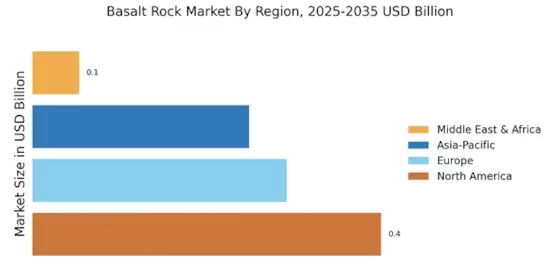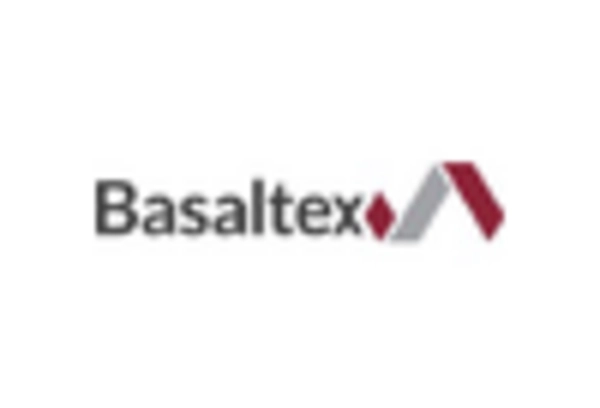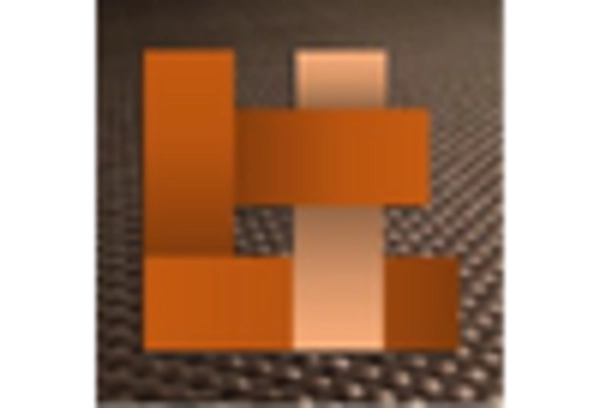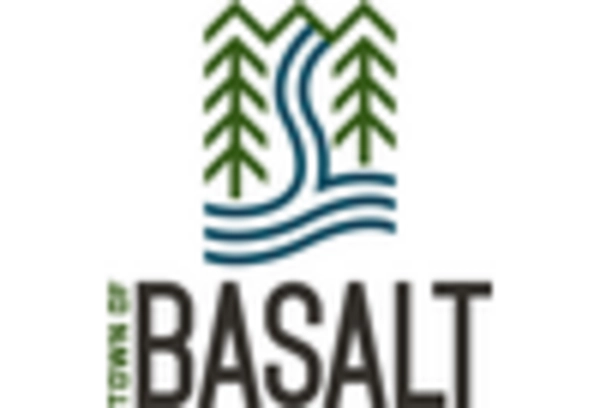Increased Awareness of Basalt's Benefits
The growing awareness of the benefits of basalt rock is driving interest in the Basalt Rock Market. Educational campaigns and industry seminars are highlighting basalt's advantages, such as its thermal stability, fire resistance, and lightweight nature. As architects and engineers become more informed about these properties, the demand for basalt in various applications is likely to rise. Furthermore, the material's ability to enhance the performance of composite materials is being recognized, leading to its increased use in sectors like aerospace and automotive. This heightened awareness is expected to contribute to the growth of the Basalt Rock Market, as more stakeholders seek to leverage basalt's unique characteristics.
Rising Demand for Eco-Friendly Materials
The increasing emphasis on sustainable construction practices is driving the Basalt Rock Market. As environmental concerns gain traction, builders and architects are seeking materials that minimize ecological impact. Basalt rock, known for its durability and low carbon footprint, is emerging as a preferred choice. The market for basalt fiber, derived from basalt rock, is projected to reach approximately 1.5 billion USD by 2026, indicating a robust growth trajectory. This shift towards eco-friendly materials not only aligns with regulatory frameworks but also appeals to consumers who prioritize sustainability. Consequently, the Basalt Rock Market is likely to experience heightened demand as stakeholders recognize the long-term benefits of incorporating basalt into construction projects.
Technological Innovations in Basalt Processing
Technological advancements in the processing of basalt rock are significantly influencing the Basalt Rock Market. Innovations such as improved extraction techniques and enhanced fiber production methods are increasing efficiency and reducing costs. For instance, the development of advanced machinery for basalt fiber production has led to a reduction in energy consumption by up to 30%. This not only makes basalt more competitive against traditional materials but also enhances its appeal in various applications, including construction and automotive industries. As these technologies continue to evolve, the Basalt Rock Market is poised for expansion, with new applications emerging and existing ones becoming more economically viable.
Government Initiatives Supporting Sustainable Materials
Government policies promoting the use of sustainable materials are positively impacting the Basalt Rock Market. Many countries are implementing regulations that encourage the adoption of eco-friendly construction practices, which include the use of basalt rock. Incentives such as tax breaks and grants for projects utilizing sustainable materials are becoming more common. For example, initiatives aimed at reducing carbon emissions in construction are likely to favor basalt due to its low environmental impact. This supportive regulatory environment is expected to bolster the Basalt Rock Market, as more companies seek to comply with these regulations while also appealing to environmentally conscious consumers.
Expanding Applications in Construction and Infrastructure
The diversification of applications for basalt rock is a key driver for the Basalt Rock Market. Traditionally used in construction, basalt is now finding utility in infrastructure projects, including road construction and reinforcement of concrete structures. The global market for basalt fiber composites is expected to grow at a CAGR of 12% from 2023 to 2030, reflecting the material's increasing acceptance in various sectors. This expansion is attributed to basalt's superior mechanical properties, such as high tensile strength and resistance to chemical corrosion. As industries continue to explore innovative uses for basalt, the Basalt Rock Market is likely to benefit from a broader customer base and increased demand.

















Leave a Comment